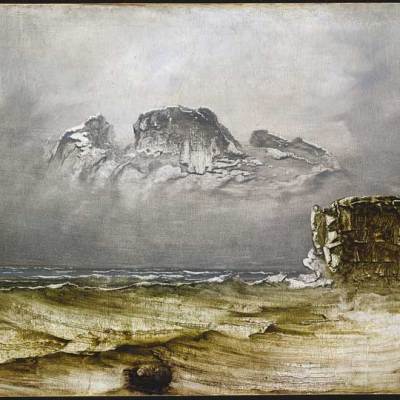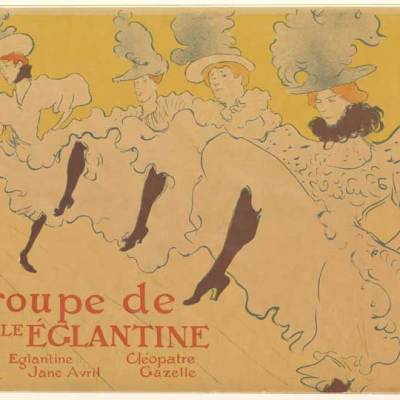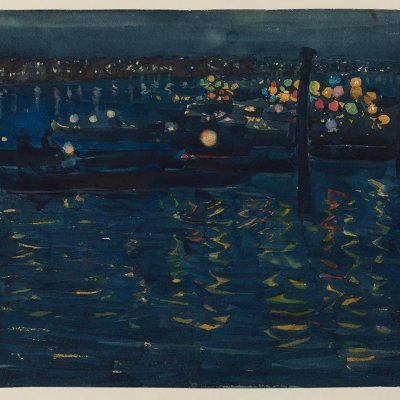Click here to buy the current issue of Apollo
When Nicolas Sarkozy lost the French presidential election in 2012, he became the first president since before Georges Pompidou’s time not to leave behind a significant new cultural building in the capital. But in Paris last October, there was an opening that suggests that the grand projet has, for the time being, given way to the private foundation.
The Fondation Louis Vuitton is the new home for the personal and corporate art collections of Bernard Arnault, chairman and CEO of the LVMH luxury-goods conglomerate. Discussion of the building itself, which is designed by Frank Gehry and located in the Bois de Boulogne, has long overshadowed its purpose. It’s hardly surprising: the museum is a deliberately spectacular piece of architecture. The 12 curved glass ‘sails’ covering the roof are the most eye-catching aspect of the design, a nod to a history of pioneering glass architecture in the capital and an attempt to respond to the context of the park.
Inside, the gallery spaces are much more conventional white cubes; it’s difficult to show art, particularly specially commissioned monochromes by Ellsworth Kelly, in a greenhouse. There will be two temporary exhibitions a year, but perhaps the primary purpose of the museum is to show the permanent collection of contemporary art, and this is what makes the whole scheme so unusual.
The project has been long in the planning – Arnault is said to have proposed the commission to Gehry after seeing the architect’s Guggenheim Bilbao in 2001. He created the Fondation Louis Vuitton and came to an extraordinary deal with the city of Paris in 2007. In exchange for permission to build in a public park, the foundation was granted a 55 year-lease on the land. In 2062, the building will be handed over to the city, but the art collection will remain the property of the foundation.
It’s impossible to know what will really happen to the art then, but it’s equally hard to imagine what Paris will do with a striking shell – or why it would want the expense of maintaining a very difficult space; a building covered in 3,600 curved panes of glass and 19,000 custom-made reinforced-concrete panels needs almost constant attention. However, the street signs in the surrounding area all generously point to the foundation and Les Sablons, the nearest metro station, already carries an outline of Gehry’s building (the sails are a logo as well as decoration) on brown wall tiles – a rare honour, in a system not known for its helpful signage. The city of Paris seems to be looking to its future acquisition.
By coincidence, the first private art foundation in France celebrated its 30th anniversary in October. The origins of the Fondation Cartier lie in rumours that the newly elected Socialist government of François Mitterrand had plans to nationalise the French jeweller. To demonstrate greater social responsibility, and to make the state back away, Alain Dominique Perrin, then president of Cartier, set up the foundation to commission and display work by contemporary artists. In 1984, the foundation opened in a chateau at Jouy-en-Josas, in the south-western suburbs of Paris. But it was the move in 1994, to a new building by the architect Jean Nouvel on the Boulevard Raspail, that made the foundation part of the city’s art scene. Perrin, who now runs only the foundation, insists that artists commissioned by the Fondation Cartier – they include Bill Viola, Richard Artschwager, Raymond Depardon – can never work directly for Cartier itself. He is gloriously lofty about luxury brands; ironically, Louis Vuitton, which allows artists to design bags, is the example he likes to use in interviews. Jean Nouvel’s building is a transparent glass box and has a garden at the rear, which you can view from the street, through distorting panes of glass. It’s the commission that made his name and it’s tempting to compare its easy gestation with the tortuous (and ongoing) progress of his state-funded Philharmonie de Paris project in the east of the city.
The opening of the Fondation Louis Vuitton has met with some dissent. In October 2014, a distinguished group of French writers, philosophers, performers and visual artists wrote a long letter to Mediapart magazine, acknowledging the important role of philanthropy in the arts but wondering whether luxury brands were more like speculators than patrons. Either way, when I visited a few weeks after the opening, the entry queue was a hundred-deep. It will be interesting to see if this popularity can be maintained.
Click here to buy the January issue of Apollo.
Related Articles
A cloud of glass in the Bois de Boulogne: the Louis Vuitton Foundation (Caroline Rossiter)
Inquiry: Attention Seekers (Richard Martin)


